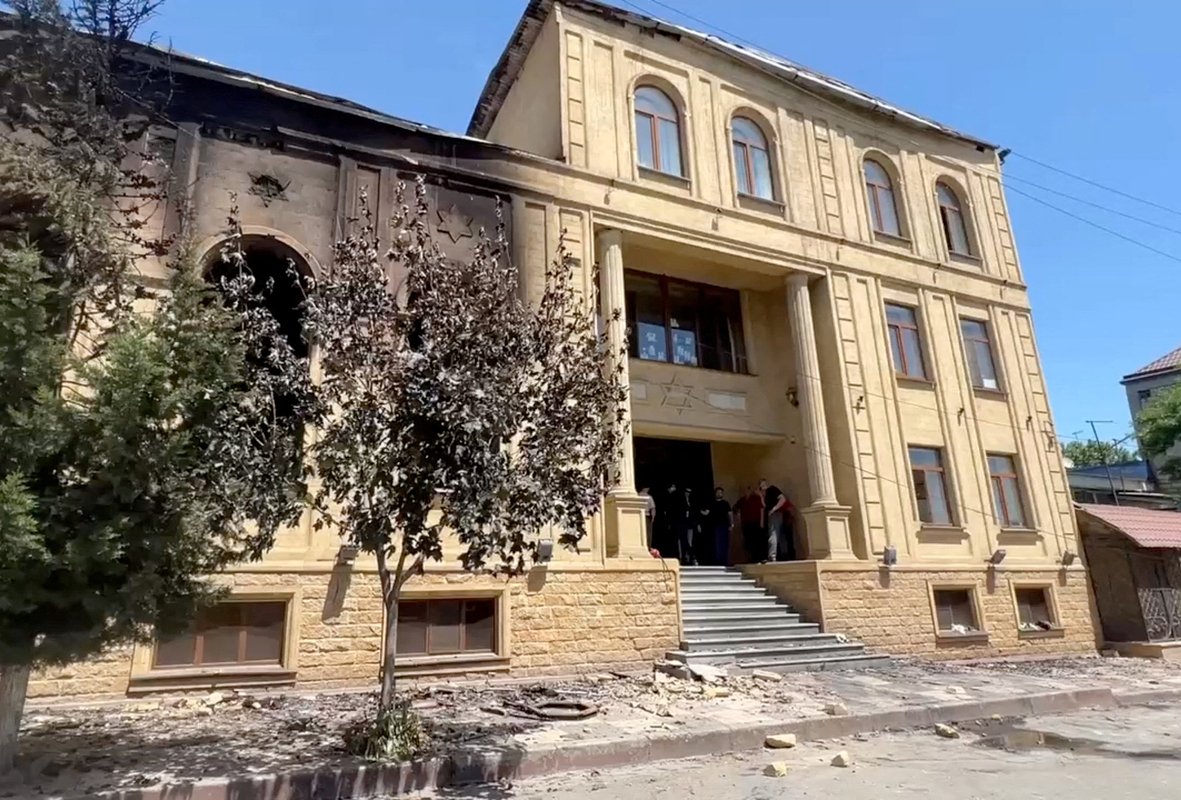Caucasus expert Yarlykapov: Instead of blood feuds, Caucasians prefer to negotiate
After the terrorist attack in Dagestan, the head of neighboring Chechnya, Ramzan Kadyrov, threatened the families of terrorists with blood feud. At a meeting with the heads of the republic’s security agencies, he said that he told his subordinates: if there is even the slightest suspicion of terrorism, the entire family of the suspect must be punished. Experts studying this issue told Lenta.ru what blood feuds can be and how widespread they are in the Caucasus.
What is blood feud?
Blood feud is an ancient and cruel custom, when a vendetta is declared against an entire clan. It arose during the period of the clan system, this practice has not completely disappeared and exists in different countries – from Albania and Greece to Yemen and Japan.
The tradition of blood revenge lives on in Russia, especially among the peoples of the North Caucasus – Adygea, Dagestan, Ingushetia, Kabardino-Balkaria, Karachay-Cherkessia, North Ossetia, Chechnya. It is used as a way to resolve conflicts.
For example, according to the head of the Caucasus Ethnography Department of the Peter the Great Museum of Anthropology in St. Petersburg (Kunstkamera), Doctor of Historical Sciences Makka Albogachieva, at the beginning of 2011, there was a state of blood feud in Ingushetia were located 73 families – for a small republic populated by huge clans, this is a large number.
In the Caucasus, blood feud could be declared for mutilation, kidnapping a woman, rape, adultery with a married woman, seduction of an unmarried woman, as well as kidnapping a girl to force her into marriage, and even unintentional actions – a traffic accident or an accident
Women were not usually directly involved in blood feuds, but they played an important role in inter-clan conflicts. Sometimes they acted as peacemakers, and sometimes, wittingly or unwittingly, they stirred up hostility.
Blood feud customs may vary
There are no exact rules for blood feuds, senior research fellow at the Center for Caucasus Problems and Regional Security at MGIMO, ethnographer Akhmet Yarlykapov told Lenta.ru.
“Everything is based on customs,” the scientist explains. “And they can differ depending on the ethnic or sub-ethnic group. Every nation has its own traditions, and in the modern world, where many traditions are forgotten, people can create new ones.”
Consequences of the terrorist attack on Dagestan
Photo: Reuters
Doctor of Historical Sciences Makka Albogachieva noted that before the Islamization of the peoples of the Caucasus, adat (custom) allowed in the case of blood feud to deal with any person from the offender’s clan, even if he had nothing to do with the conflict. However, after Islamization, an attack on an innocent person began to be condemned. According to Sharia, revenge can only be taken against the immediate culprit and only by the same means and in the same way.
Blood feud as a mass phenomenon began to fade away after the Russian Empire came to the Caucasus regions, Yarlykapov noted in turn. However, in our time, customs have begun to return in some republics. Paradoxically, the revival of non-Islamic practices is associated with the re-Islamization of the Caucasus.
Official commissions were created to resolve conflicts.
The Soviet government, which initially relied on national minorities and pursued a policy of expanding the rights of autonomies, began to combat the phenomenon of blood feud almost immediately. The first official conciliation commissions appeared in the 1920s, just a few years after the revolution. The most respected and influential local residents were recruited to work in them. Also in the Caucasus there have always been so-called unofficial mediators who have been dealing with conflict resolution issues practically their entire lives.
Islam calls for forgiveness and the rejection of revenge, but for some peoples in the Caucasus, faith clashed with traditional notions of honor and dignity.
In such societies, peaceful resolution of conflict was often seen as weakness and shame. Therefore, the work of reconciliation commissions was often very painstaking: negotiations with families could last for years.
Currently, the Caucasus is looking for ways to avoid blood feuds
In 2011, the head of Chechnya, Ramzan Kadyrov, announced a complete end to the practice of blood feuds in the republic and the dissolution of special reconciliation commissions.
Instead of vendettas, families began to look for other solutions to the problem, scientists confirm.
“In most cases, the parties prefer to negotiate, since the custom of blood feud is very severe. The injured party has the right to kill men from the offender’s side. Therefore, settlement and agreements play an important role,” confirms ethnographer and Caucasus expert Akhmet Yarlykapov.

Synagogue attacked in Dagestan
Photo: Reuters
This is how the “price of blood” appeared – a monetary expression of compensation that a family can receive. A similar decision was made at a Muslim conference at the suggestion of Abdurakhman Martazanov, at that time the qadi (chief Sharia judge) of the republic. He referred to the Koran and reminded that compensation equal to the cost of 100 camels should be paid for a person. It was decided that in the 21st century this is 1 million rubles.
Historian Albogachieva told about a tragic incident that recently occurred in Moscow. An accident took the life of her friend’s son, the driver of the car he was in was a Chechen.
When they buried their son in Ingushetia, 11 or 12 cars of the driver’s relatives arrived to ask for forgiveness for their loved one. They wanted to be forgiven for the bloodshed, because the institution of blood feud still exists in one form or another and people try to find ways to reconcile
In turn, ethnographer Yarlykapov points out that it is unlikely that there is a single opinion in the Caucasus regarding blood feud: “Nobody has measured this, so one might get the impression that everyone approves [отказ от кровной мести]but the real picture may be completely different.”
#Slaughtered #families #threats #payoffs #blood #feud #Kadyrov #threatened #terrorists #relatives